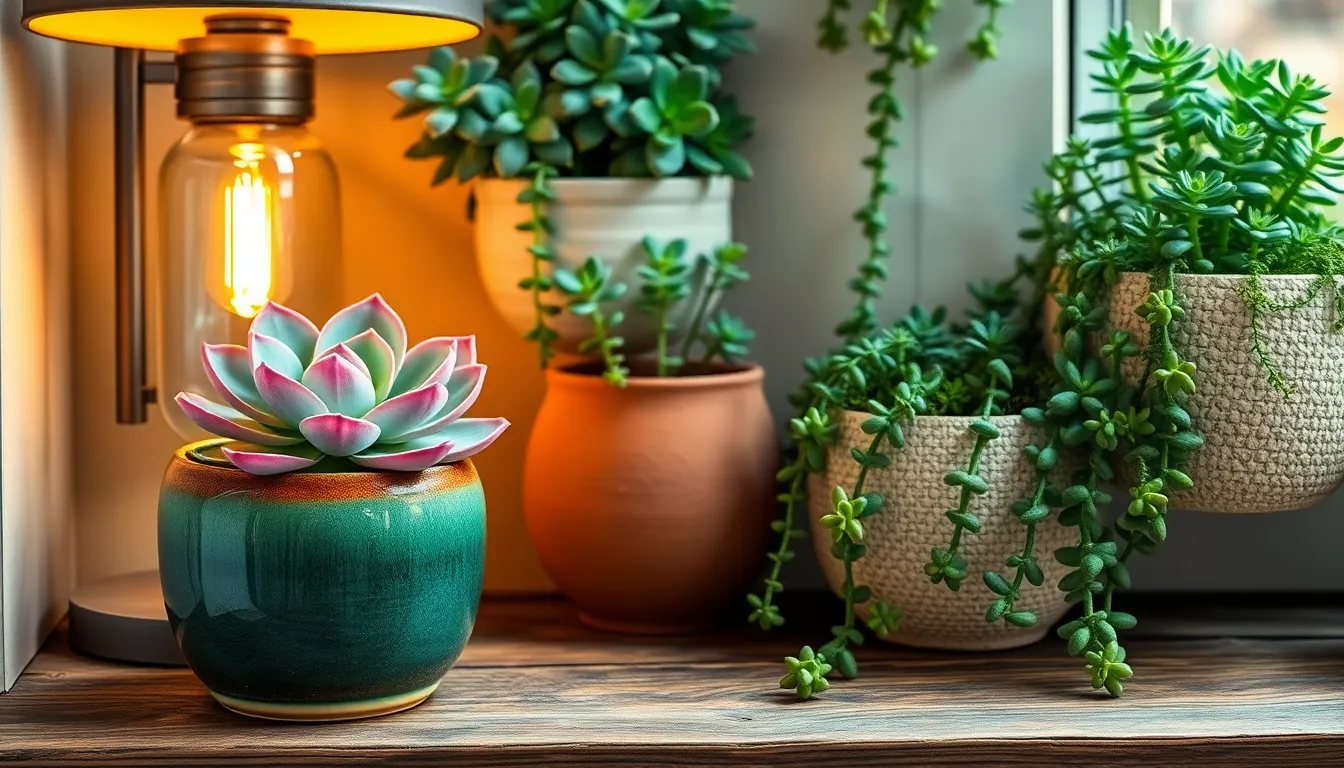Discovering the world of succulents is like stepping into a realm of endless possibilities, where each plant tells its own story of resilience and beauty. For both novice and seasoned gardeners, the thought of cultivating these remarkable plants in less-than-ideal lighting conditions might seem daunting. Yet, it’s entirely possible to create a lush, thriving succulent sanctuary even in spaces that don’t bask in abundant sunlight. Understanding which succulents can flourish with lower light levels unveils a new dimension of gardening, where adaptability meets elegance.
Embracing the challenge of low-light gardening offers an exciting opportunity to diversify your plant collection and bring greenery into every corner of your home. Whether you’re nurturing your first houseplant or expanding an already impressive indoor garden, you’ll find that certain succulents are perfectly suited for these environments. This article will guide you through a selection of resilient succulents that defy the odds and thrive without constant sunbathing. By the end, you’ll have a toolkit of knowledge to transform even the shadiest spots into vibrant displays of life.
Understanding Low-Light Succulents
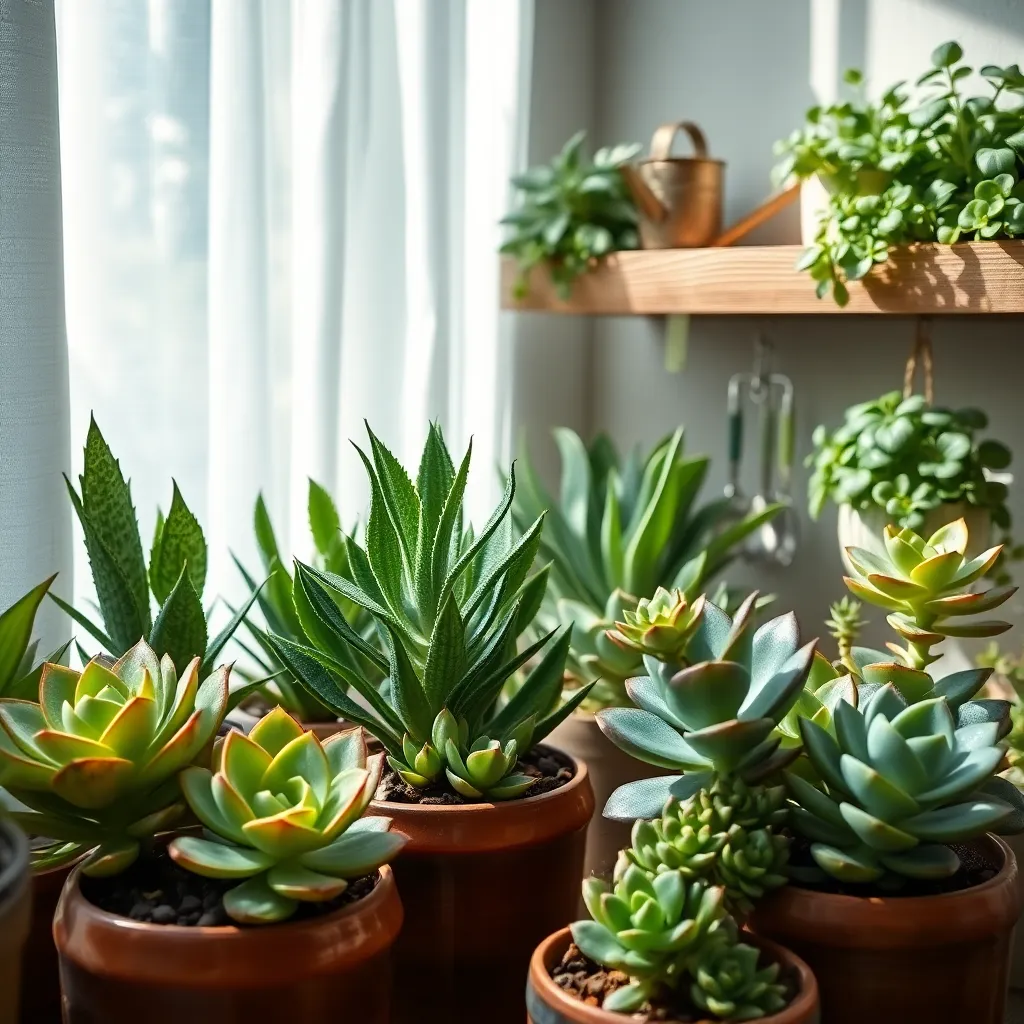
When it comes to low-light succulents, understanding their unique needs is crucial to their success. These resilient plants can adapt to less sunlight, but they do have specific requirements that must be met for optimal growth.
First and foremost, choosing the right soil is essential. Opt for a well-draining mix, such as a cactus or succulent blend, which ensures that excess water doesn’t linger and cause root rot.
Watering is another critical aspect of low-light succulent care. It’s best to water thoroughly but infrequently, allowing the soil to dry out completely between waterings to prevent overwatering.
For those looking to advance their succulent care, consider rotating the plants regularly. This practice encourages even growth and prevents them from leaning towards the light source.
Additionally, monitoring humidity levels can be beneficial, as succulents generally prefer drier conditions. If you live in a humid environment, using a dehumidifier can help maintain an ideal atmosphere for these plants.
To ensure your succulents thrive, pay attention to their growth patterns and adjust care as needed. With patience and the right care, your low-light succulents will flourish even in less-than-ideal lighting conditions.
Top Succulents for Dim Spaces
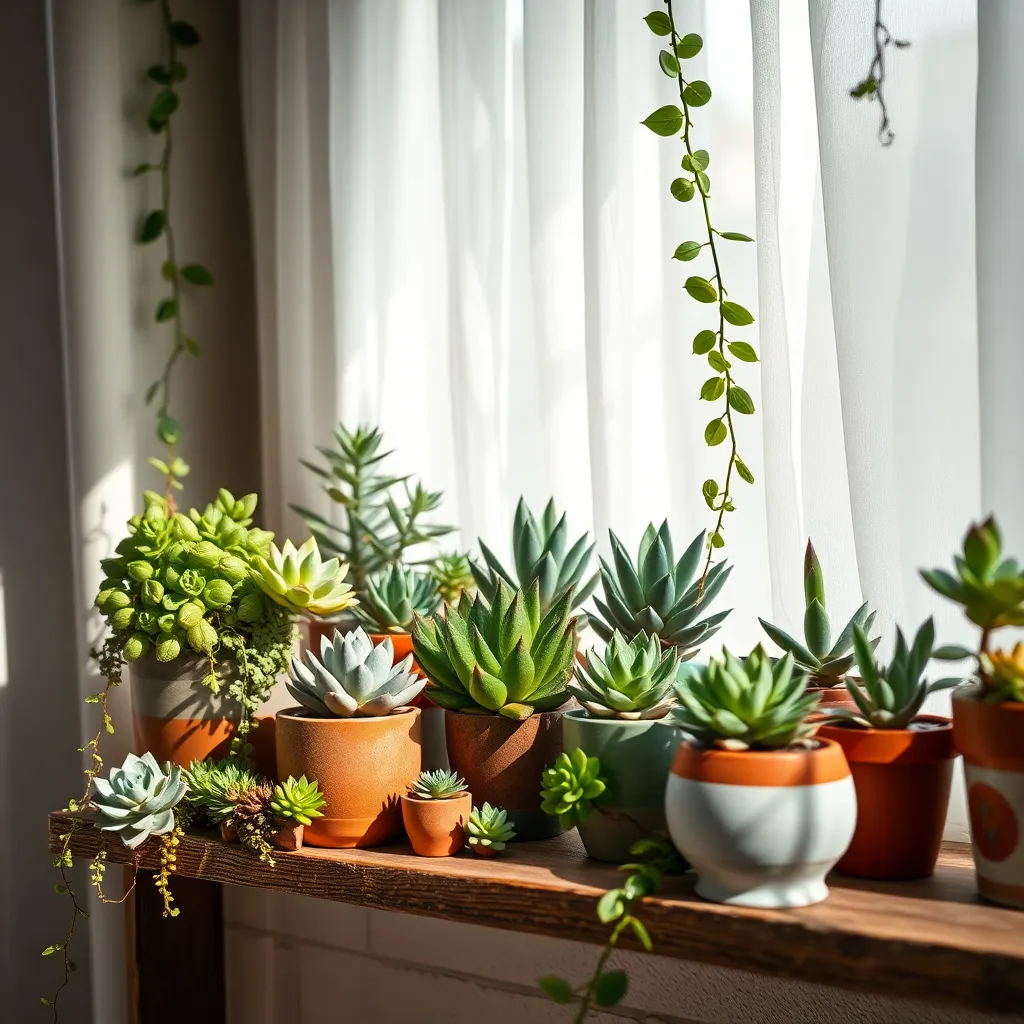
If you’re looking to brighten up dim indoor spaces, certain succulents are surprisingly well-suited for such conditions. One excellent choice is the Snake Plant (Sansevieria), which thrives even in low-light areas where other plants might struggle.
Another fantastic option is the Jade Plant (Crassula ovata), known for its resilience in less-than-ideal lighting. While it prefers brighter conditions, this succulent can adapt to lower light settings if necessary, making it perfect for a variety of indoor environments.
When caring for these succulents, ensure that they are planted in a well-draining soil mix, such as a cactus or succulent blend. This helps prevent root rot, a common issue with overwatering, especially in low-light conditions where evaporation rates are slower.
Water your low-light succulents sparingly, allowing the soil to dry out completely between waterings. In dim spaces, you might find that they require watering only once every two to three weeks, depending on humidity and temperature.
Advanced gardeners can boost plant growth by rotating their succulents periodically, ensuring all sides receive equal light exposure. Additionally, consider using a grow light if the natural light is insufficient, which can enhance growth without compromising the plant’s health.
Optimizing Indoor Light Conditions
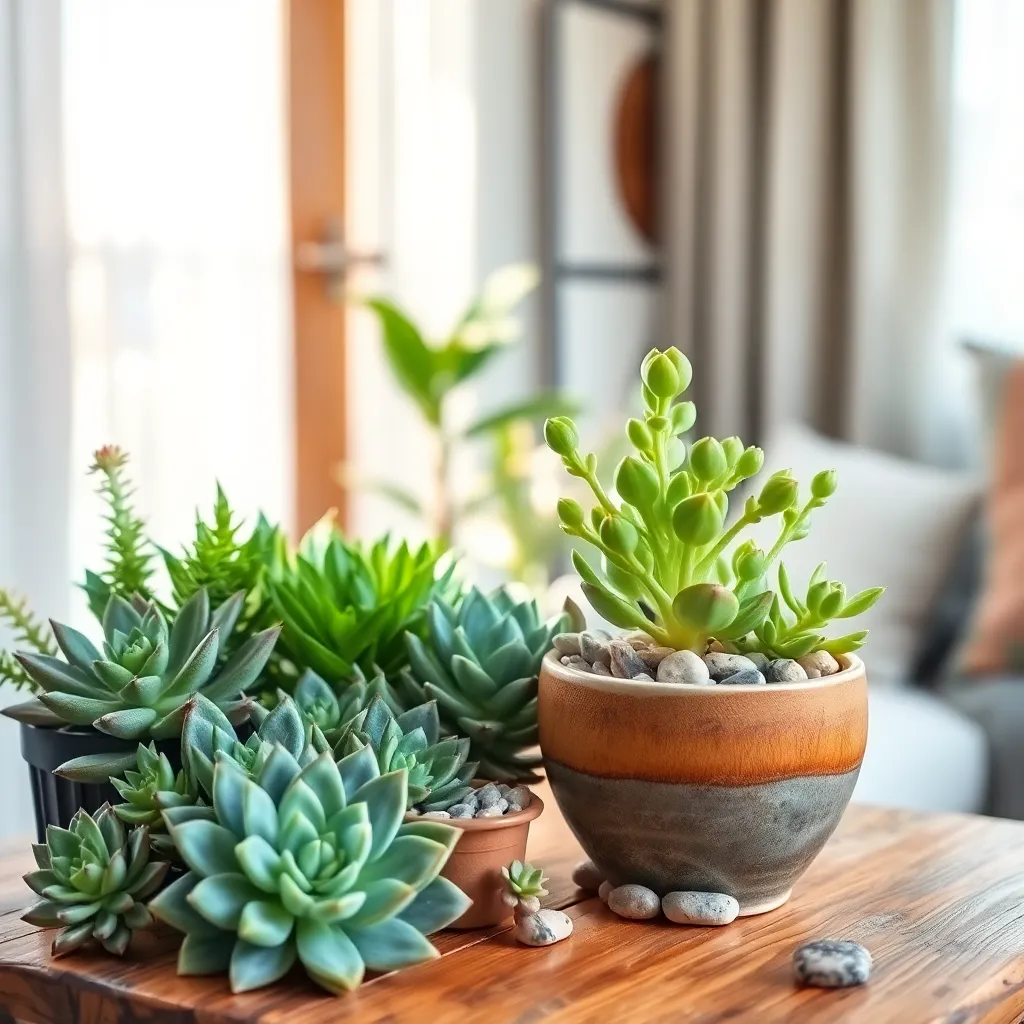
Optimizing indoor light conditions is essential for ensuring that your succulents thrive, even in low-light environments. Start by assessing the natural light levels in your space by observing which areas receive indirect sunlight throughout the day.
Consider using artificial lighting to supplement natural light, especially in rooms with minimal windows. LED grow lights are an excellent choice as they provide the full spectrum of light that succulents need for photosynthesis.
Position your succulents near windows that offer the most light, preferably east or west-facing, to maximize their exposure. If direct sunlight is too intense, sheer curtains can diffuse the light, preventing leaf burn while still allowing your plants to absorb enough energy.
Rotating your succulents every few weeks helps them grow evenly and prevents them from leaning towards the light source. Keep an eye on their growth patterns and adjust their positioning or the intensity of the grow lights accordingly, ensuring balanced and healthy development.
Proper Care for Shaded Succulents
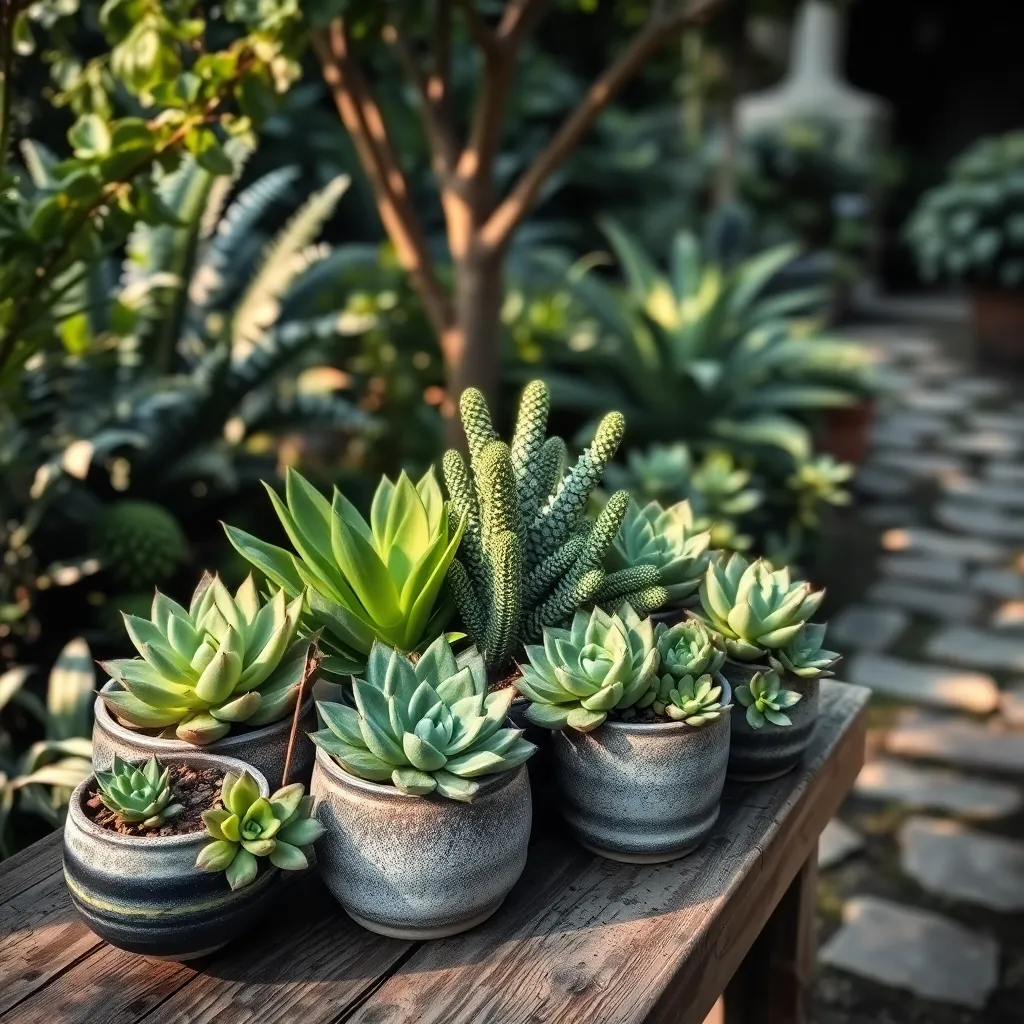
Shaded succulents require a bit more attention compared to those basking in full sunlight. To ensure they thrive, it’s essential to place them in an area where they receive indirect but consistent light, such as near a north-facing window.
Using the right soil is crucial; opt for a well-draining mix, ideally a cactus or succulent blend. This will prevent root rot, a common issue for succulents that don’t have the opportunity to dry out quickly.
Watering is another critical aspect; these plants need less frequent watering than their sun-loving counterparts. A good rule of thumb is to water only when the top inch of soil feels dry, typically every two to three weeks depending on humidity levels.
To enhance their growth, consider rotating your succulents every week. This ensures even light exposure and prevents them from stretching towards the light, helping them maintain a compact and healthy form.
Common Mistakes to Avoid

One common mistake when growing succulents in low light is using a potting mix that retains too much moisture. It’s crucial to use a well-draining soil mix, such as one specifically designed for cacti and succulents, to prevent root rot.
Another frequent error is overwatering, which is often detrimental to succulents in shaded conditions. Instead of adhering to a strict schedule, check the moisture level of the soil by inserting your finger about an inch deep; water only when it feels completely dry.
Positioning succulents too far from any indirect light source can inhibit their growth, leading to leggy and unhealthy plants. Even though they tolerate low light, placing them near a north-facing window or using a grow light can enhance their vitality.
Failing to rotate the plants can result in uneven growth, with succulents stretching toward the available light. Make it a habit to rotate your succulents every few weeks to ensure all sides receive equal exposure, promoting balanced growth.
Beginners might overlook the importance of temperature and humidity control. While these plants prefer warmer temperatures, ensure they are not exposed to drafts or excessive humidity, which can encourage mold or pest infestations.
Conclusion: Growing Success with These Plants
In exploring the fascinating world of low-light succulents, we’ve uncovered five key concepts that mirror the nurturing of healthy relationships: resilience, adaptability, the importance of environment, thoughtful care, and patience. Just like these durable plants, thriving relationships require resilience to weather challenges, adaptability to change, an environment that fosters growth, consistent care, and patience to flourish over time.
As a next step, take a moment to assess your own relationship environment. Identify one small change you can make today to enhance your connection, whether it’s setting aside quality time or expressing gratitude. This simple act can be the seed that encourages new growth.
To ensure these insights remain at your fingertips, bookmark this article now. It will serve as a valuable resource whenever you need to remind yourself of the foundational elements that support a thriving partnership.
Remember, cultivating a relationship is like tending to a garden; with the right care and attention, it will bloom beautifully. Embrace these principles, and watch as your relationships grow stronger and more fulfilling with each passing day. Your journey to deeper connections starts now.

